Essential Security Measures for Your Home
In today's world, ensuring the safety of your home is more important than ever. With increasing crime rates and reports of break-ins, the need for effective security measures cannot be overstated. So, how can you transform your home into a fortress? This article explores vital strategies and practices to enhance your home's security, ensuring the safety of your family and belongings. From understanding the basics of home security to choosing the right locks and installing a comprehensive security system, we will cover all the essential aspects. By the end of this journey, you'll be equipped with the knowledge to deter intruders and create a secure living environment for yourself and your loved ones.
A solid foundation in home security begins with understanding the basic principles. It’s not just about locking your doors; it's about creating a comprehensive approach to safety. Home security involves a mix of physical barriers, technology, and community engagement. Think of it as a puzzle where each piece plays a vital role. For instance, proper lighting can deter intruders, while a good alarm system can alert you to breaches. Understanding these components allows you to effectively protect your property and loved ones. Remember, a well-informed homeowner is a secure homeowner!
When it comes to home security, selecting appropriate locks is crucial. The lock on your door is your first line of defense against unwanted intruders. But with so many options available, how do you choose? This section discusses different types of locks, their features, and how to choose the best options for your doors and windows. From traditional deadbolts to high-tech smart locks, understanding the pros and cons of each can significantly enhance your home security.
Exploring the differences between deadbolts and standard locks can help homeowners make informed decisions. Deadbolts are generally considered more secure than standard locks because they require a key to be opened from the outside and have a solid metal bolt that extends into the door frame. On the other hand, standard locks can be easily manipulated. By opting for deadbolts, you’re essentially adding an extra layer of protection to your home.
Understanding the distinctions between single and double cylinder deadbolts can aid in choosing the right lock for specific entry points. A single cylinder deadbolt is operated with a key on the outside and a thumb turn on the inside, while a double cylinder deadbolt requires a key on both sides. This means that while single cylinder locks are more convenient, double cylinder locks provide enhanced security, especially for doors with glass panels. It’s all about finding the right balance between security and accessibility.
Smart locks offer convenience and advanced features, but they also come with potential vulnerabilities. Imagine being able to unlock your door with just your smartphone! Sounds great, right? However, this technology can be susceptible to hacking. This part evaluates the advantages and disadvantages of integrating smart locks into your home security system. Weighing these factors will help you determine if a smart lock is the right choice for you.
Windows are often vulnerable entry points for intruders. Therefore, it’s essential to examine various window security solutions, including locks, sensors, and protective films to enhance safety. Installing window locks is a straightforward yet effective measure. Additionally, window sensors can alert you if a window is opened unexpectedly. Protective films can also make it harder for burglars to break the glass. The more layers of security you add, the harder it becomes for an intruder to gain access.
A comprehensive security system can significantly deter crime. This section covers the types of security systems available, their components, and factors to consider when choosing one for your home. Whether you prefer a traditional alarm system or a modern smart home setup, understanding the features and capabilities of each option is crucial for making an informed decision.
Deciding between wired and wireless security systems involves understanding their differences. Wired systems often provide more reliable connections but can be more challenging to install and may require professional help. Conversely, wireless systems are easier to set up and can be expanded easily, but they may be susceptible to interference. Assessing your specific needs will guide you toward the best choice.
Homeowners can choose between professional monitoring services or DIY systems. Professional services offer around-the-clock monitoring and quick response times, but they come with monthly fees. DIY systems allow you to manage your security without ongoing costs, but you’ll need to be proactive about monitoring. This part outlines the pros and cons of each approach, helping you determine the best fit for your needs.
Enhancing outdoor security is essential for overall home protection. Proper outdoor lighting can significantly improve security by illuminating dark areas, making it harder for intruders to approach unnoticed. Strategic landscaping can also deter intruders and enhance visibility. By designing your yard to minimize hiding spots and improve overall security, you create a less inviting environment for potential criminals.
Community involvement plays a vital role in home security. Forming a neighborhood watch can enhance safety for everyone. When neighbors look out for one another, it creates a sense of collective vigilance that can deter crime. Regular meetings foster communication among neighbors, allowing you to discuss security concerns and share valuable information.
Being prepared for emergencies is a crucial aspect of home security. An emergency plan provides clear guidelines for family members during crises. Regular safety drills can help family members react calmly during emergencies, ensuring that everyone knows what to do in case of a security breach or natural disaster. Practicing various safety scenarios is essential for preparedness.
- What is the best type of lock for home security? Deadbolts are generally considered the most secure option.
- Are smart locks safe? While they offer convenience, they can be vulnerable to hacking.
- How often should I test my security system? It’s recommended to test your system at least once a month.
- What should I include in my emergency plan? Include escape routes, emergency contacts, and safety drills.
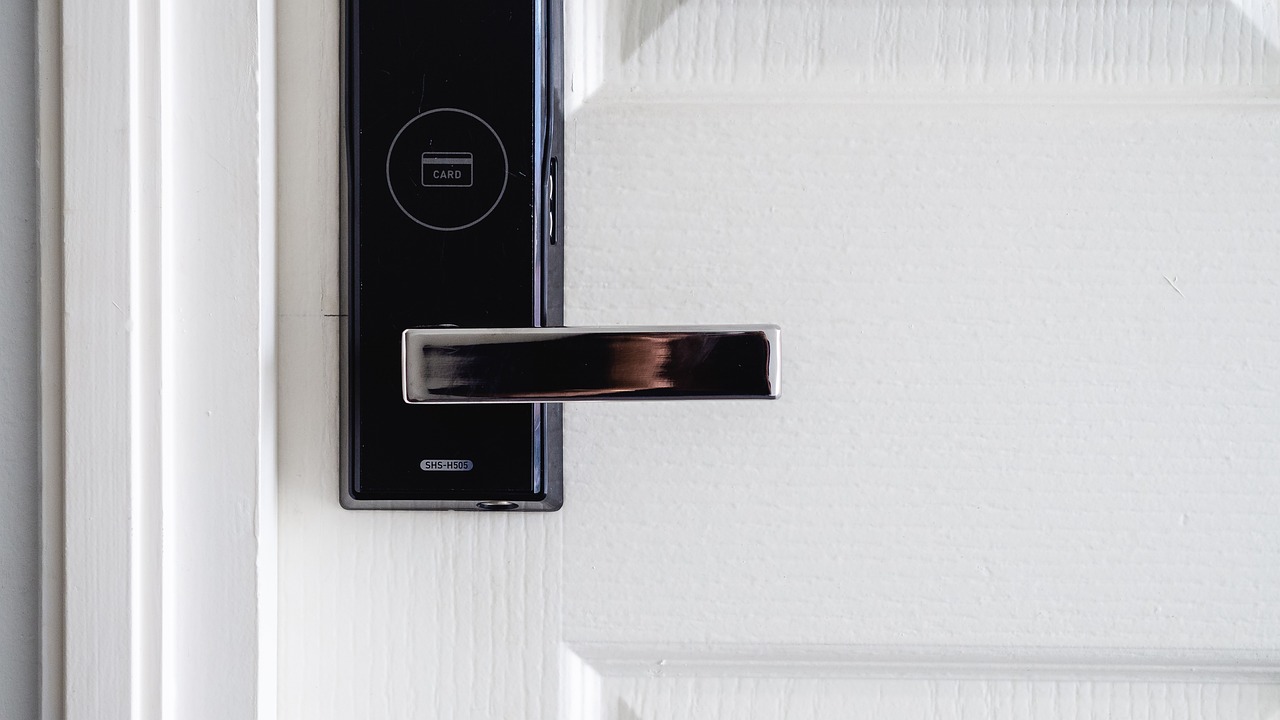
Understanding Home Security Basics
When it comes to safeguarding your home, understanding the basics of home security is the first step in creating a safe living environment for you and your family. Think of your home as a fortress; without a solid foundation, it becomes vulnerable to outside threats. The primary goal of home security is to deter intruders and protect your loved ones and belongings. This involves a combination of physical barriers, technology, and awareness. Let's break down the essential concepts that every homeowner should know.
First and foremost, it's important to recognize that security is not just about installing locks and alarms. It encompasses a holistic approach that includes environmental design, community awareness, and personal vigilance. This means you should assess your property for vulnerabilities, such as poorly lit areas, overgrown shrubs, or unlocked windows. By identifying these weak points, you can take proactive measures to mitigate potential risks.
Another key aspect of home security is understanding the different types of threats you may face. Intruders can vary in motivation and method, ranging from opportunistic thieves looking for an easy target to more organized criminals who may plan a break-in. Recognizing these threats can help you tailor your security measures effectively. For instance, if you live in a neighborhood with higher crime rates, you might want to invest in a more comprehensive security system.
Moreover, the concept of layered security is crucial. This involves implementing multiple security measures that work together to create a robust defense. Here’s a quick overview of some effective layers you can consider:
- Physical Barriers: Fences, gates, and reinforced doors can serve as the first line of defense.
- Alarm Systems: These can alert you and authorities in case of a breach.
- Surveillance Cameras: Visible cameras act as a deterrent and help monitor activities around your home.
- Neighborhood Watch: Engaging with neighbors can enhance community vigilance.
Additionally, don't underestimate the power of technology. Smart home devices can significantly enhance your security. From smart locks to motion-sensor lights, these innovations not only provide convenience but also add an extra layer of protection. However, it’s essential to stay updated on the latest security technologies and their vulnerabilities to ensure they effectively contribute to your home’s safety.
In conclusion, understanding home security basics is about more than just installing locks; it’s about creating a comprehensive strategy tailored to your specific situation. By being proactive, aware, and informed, you can significantly enhance the security of your home. Remember, a secure home is a happy home!

Choosing the Right Locks
When it comes to securing your home, is paramount. After all, your doors are the first line of defense against intruders. But with so many options available, how do you know which locks are the best for your needs? The key is to understand the different types of locks and their features. Each lock serves a unique purpose, and selecting the right one can make all the difference in keeping your family and belongings safe.
First, let’s dive into the various types of locks available. You might have heard of standard locks, deadbolts, smart locks, and even padlocks. Each type has its own strengths and weaknesses. For instance, standard locks are often easy to install and use but may not provide the same level of security as a deadbolt. On the other hand, deadbolts are known for their strength and resistance to forced entry, making them a popular choice for homeowners.
Now, let’s compare two common types of locks: deadbolts and standard locks. Deadbolts are designed with a solid metal bolt that extends into the door frame, making it much harder for someone to kick in the door. In contrast, standard locks can often be manipulated with simple tools. If you’re serious about home security, you’ll want to consider installing deadbolts on all your exterior doors. Here’s a quick comparison:
| Lock Type | Security Level | Ease of Use |
|---|---|---|
| Standard Lock | Low | Very Easy |
| Deadbolt | High | Moderate |
But wait, there’s more! When choosing a deadbolt, you’ll also need to decide between single cylinder and double cylinder options. A single cylinder deadbolt has a keyhole on the outside and a thumb turn on the inside, which is convenient for quick access. However, if you have a glass door or a window nearby, a double cylinder deadbolt, which requires a key on both sides, may offer better security. Just keep in mind that it could slow down your exit in an emergency.
Next up, let’s talk about the modern marvel of home security: smart locks. These high-tech devices can be controlled via your smartphone, allowing you to lock and unlock your doors remotely. They often come with features like temporary access codes for guests and alerts when someone enters your home. However, it’s important to weigh the pros and cons. While they offer convenience, smart locks can also be vulnerable to hacking if not properly secured. So, if you decide to go this route, ensure you choose a reputable brand and keep your software updated.
In summary, selecting the right locks for your home involves understanding the different types available and their security features. Whether you opt for traditional deadbolts or embrace the convenience of smart locks, the goal is to create a secure environment for your family. Remember, the more layers of security you have, the harder it will be for intruders to gain access.
- What is the best type of lock for my front door? A deadbolt is often recommended as it provides a higher level of security compared to standard locks.
- Are smart locks safe? Smart locks can be safe if you choose a reliable brand and keep your software updated to protect against vulnerabilities.
- Should I install a double cylinder deadbolt? Consider a double cylinder deadbolt if you have glass doors or windows nearby, but be aware of the potential exit delay in emergencies.
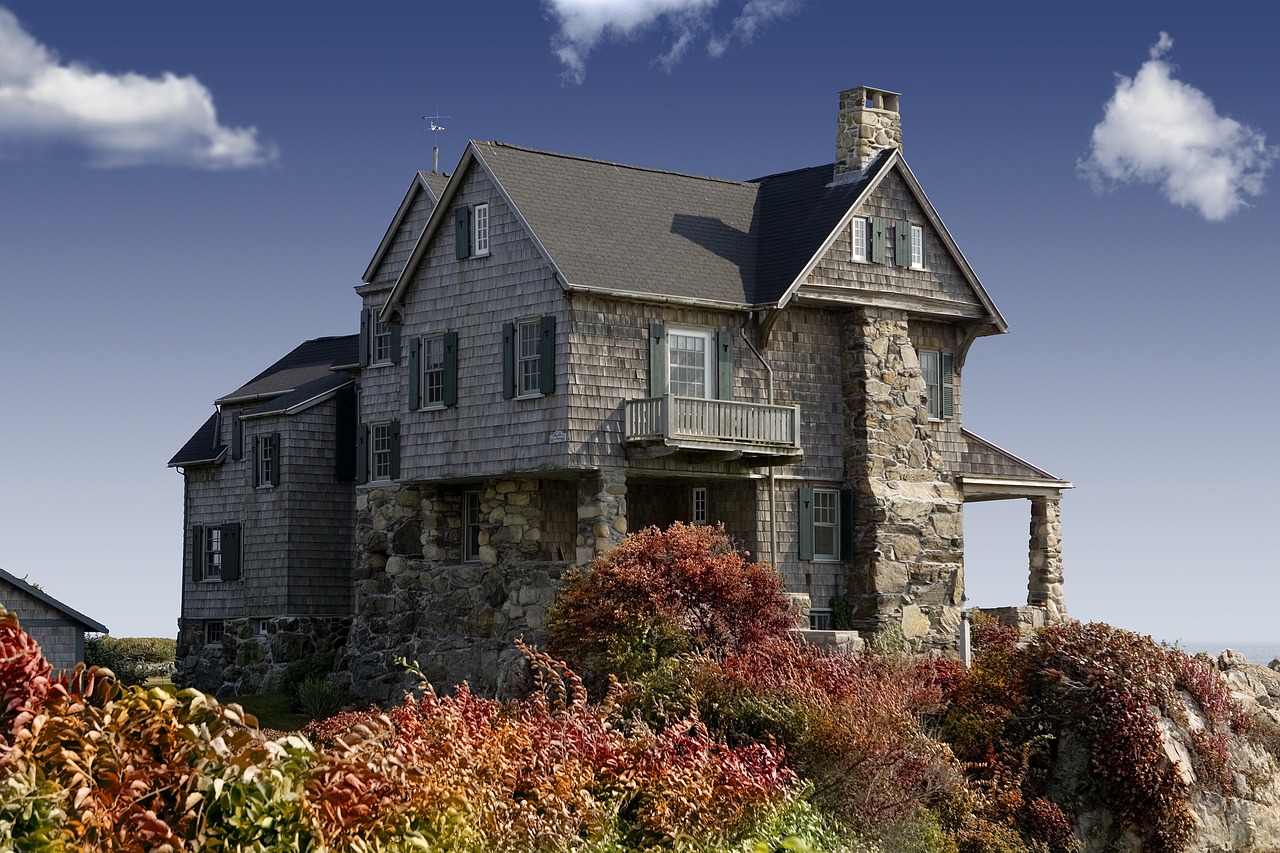
Deadbolts vs. Standard Locks
When it comes to securing your home, understanding the difference between deadbolts and standard locks is crucial. While both types of locks serve the primary purpose of keeping intruders out, they do so with varying levels of effectiveness. Standard locks, often referred to as spring bolt locks, are commonly found on residential doors. They operate using a spring mechanism that retracts when you turn the knob or handle. However, this design can be relatively easy to bypass, making them less secure than their deadbolt counterparts.
On the other hand, deadbolts provide a much stronger defense against unauthorized entry. They are typically constructed with a solid metal bolt that extends deep into the door frame when locked. This design significantly increases resistance to forced entry, such as kicking or prying. In fact, many homeowners prefer deadbolts for their enhanced security features, which can make a notable difference in deterring potential burglars. To illustrate the differences between these two types of locks, consider the following table:
| Feature | Standard Locks | Deadbolts |
|---|---|---|
| Security Level | Low | High |
| Mechanism | Spring-loaded | Solid metal bolt |
| Resistance to Force | Low | High |
| Ease of Installation | Easy | Moderate |
It's also important to note that not all deadbolts are created equal. You'll encounter two primary types: single cylinder and double cylinder deadbolts. A single cylinder deadbolt features a keyhole on the outside and a thumb turn on the inside, making it simple to lock and unlock from within. However, this can pose a risk if you have a window near the door; an intruder could easily reach in and unlock the door. In contrast, a double cylinder deadbolt requires a key on both sides, which enhances security but can be less convenient during emergencies.
In conclusion, while standard locks may suffice for interior doors or less critical entry points, investing in deadbolts is a wise choice for external doors. They provide a significant boost in security, making your home less appealing to would-be intruders. So, when upgrading your home security, consider the level of protection you desire and choose the lock type that best meets your needs.
- What is the best type of lock for my front door? A deadbolt is generally the best option for front doors due to its superior security features.
- Are smart locks more secure than deadbolts? Smart locks can offer convenience and additional features, but they may have vulnerabilities that traditional deadbolts do not.
- Can I install a deadbolt myself? Yes, many homeowners can install deadbolts themselves with basic tools, but it's important to follow the manufacturer's instructions carefully.
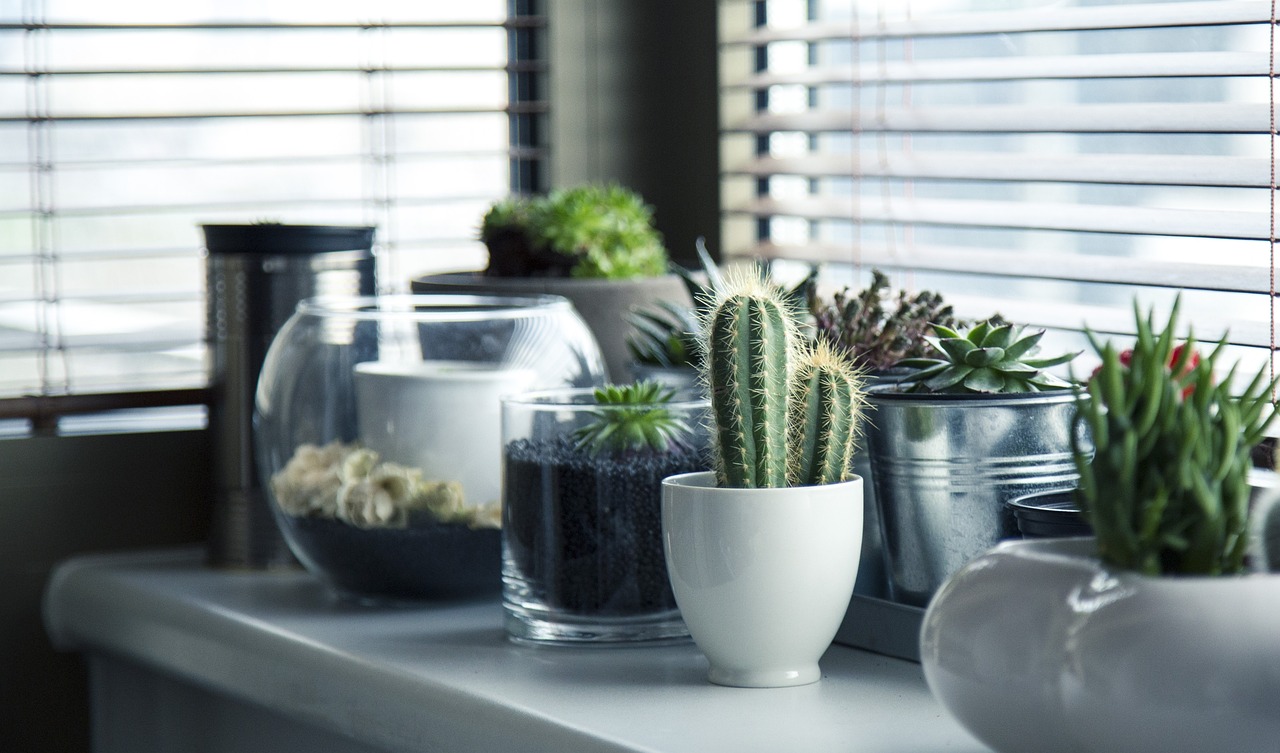
Single Cylinder vs. Double Cylinder Deadbolts
When it comes to securing your home, choosing the right type of deadbolt is crucial. The two primary options available are single cylinder and double cylinder deadbolts. Each type has its own unique features, advantages, and potential drawbacks, making it essential to understand the differences before making a decision.
A single cylinder deadbolt is designed to be operated with a key from the outside and a thumb turn from the inside. This design allows for quick and easy access, which can be particularly beneficial in emergency situations. However, this convenience comes with a potential vulnerability. If a burglar gains access to a window near the door, they can easily reach in and turn the thumb latch, unlocking the door. This makes single cylinder deadbolts more suitable for front doors that are not easily accessible from nearby windows.
On the other hand, a double cylinder deadbolt requires a key for both the outside and the inside. This design enhances security, especially for doors that have windows or are located near windows. Since both sides require a key, it prevents intruders from unlocking the door from the inside if they break a nearby window. However, this added layer of security comes with a trade-off: in an emergency, such as a fire, you may need to fumble for your keys to exit quickly, which could pose a serious risk to your safety.
To make an informed choice, consider the following factors:
- Location: If your door is close to a window, a double cylinder deadbolt may be the safer option.
- Accessibility: Is quick access important for your family? If so, a single cylinder deadbolt could be more practical.
- Emergency Situations: Think about how quickly you need to exit your home in case of an emergency.
In summary, both single and double cylinder deadbolts offer distinct advantages and challenges. Assessing your specific needs, the layout of your home, and the potential risks will help you choose the best option for your security. Remember, the ultimate goal is to create a safe and secure environment for you and your loved ones.
1. Are single cylinder deadbolts less secure than double cylinder deadbolts?
While single cylinder deadbolts are convenient, they can be less secure in situations where a window is nearby, allowing intruders to unlock the door from the inside. Double cylinder deadbolts offer enhanced security but may pose risks in emergencies.
2. Can I install a deadbolt myself?
Yes, many homeowners choose to install deadbolts themselves. However, if you're unsure about the installation process, hiring a professional locksmith is a good idea to ensure proper installation and security.
3. What should I consider when choosing a deadbolt?
Consider factors such as the location of the door, the presence of nearby windows, ease of access, and how quickly you may need to exit in an emergency when choosing a deadbolt.
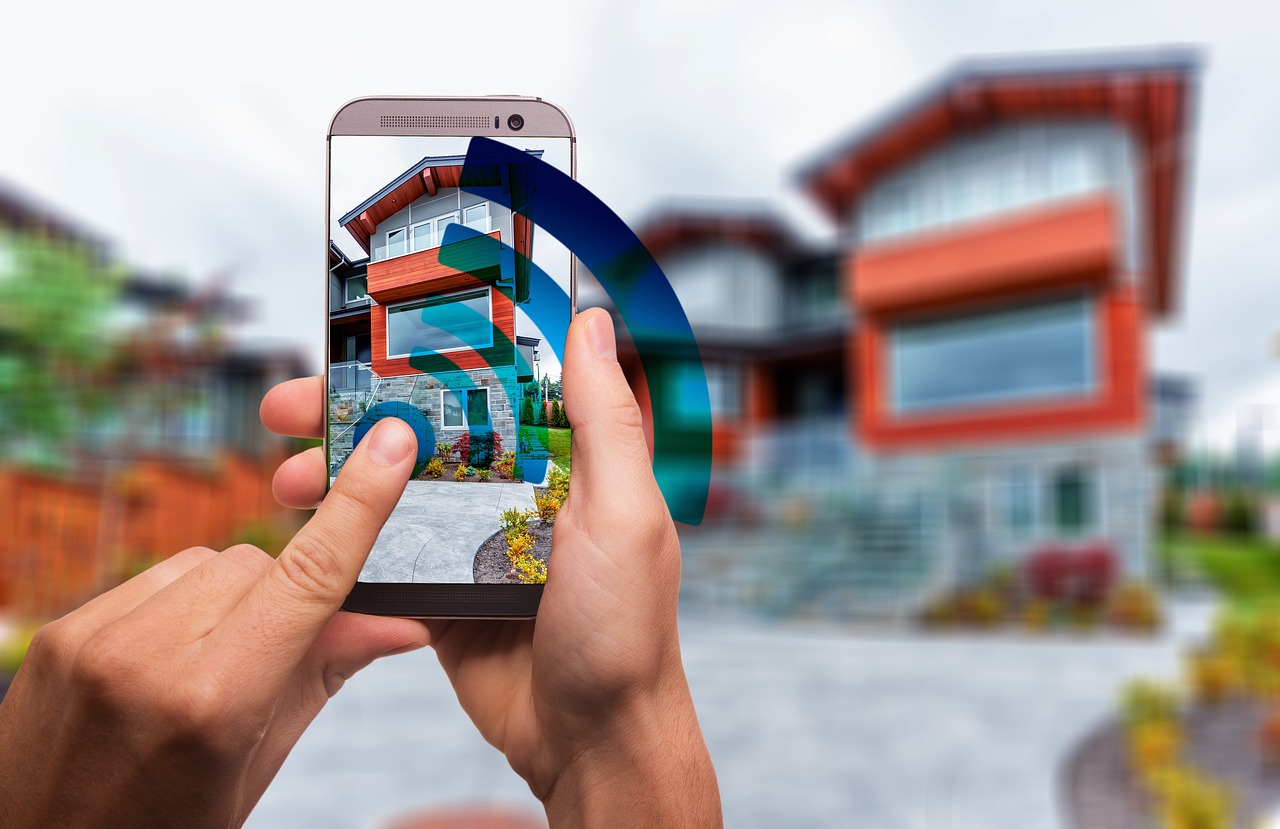
Smart Locks: Pros and Cons
Smart locks have revolutionized the way we secure our homes, combining convenience with advanced technology. Imagine walking up to your front door, and with just a simple tap on your smartphone, the lock disengages. Sounds like something out of a sci-fi movie, right? However, while these high-tech devices offer a plethora of benefits, they also come with their own set of challenges that every homeowner should consider.
Pros: One of the most significant advantages of smart locks is their convenience. No more fumbling for keys or worrying about losing them. With smart locks, you can control access to your home remotely, granting entry to guests or service providers even when you’re not there. Additionally, many smart locks come equipped with features like auto-locking, which ensures your door is securely locked after you leave. This can provide peace of mind, especially for those who often forget to lock up.
Another appealing aspect is the ability to monitor who enters and exits your home. Most smart locks offer activity logs, allowing you to see when family members arrive or if someone has entered your home without permission. This feature can be particularly useful for families with young children or for those who want to keep an eye on their property while away.
Cons: Despite their benefits, smart locks aren't without downsides. One major concern is their reliance on technology. What happens if the battery dies, or if there's a power outage? While most smart locks have backup keys or manual override options, the potential for technological failure can be a significant worry for some homeowners.
Moreover, smart locks can be susceptible to hacking. While manufacturers prioritize security, no device is entirely immune to cyber threats. Homeowners need to be proactive in safeguarding their networks and regularly update their lock's firmware to protect against vulnerabilities.
Another aspect to consider is the cost. Smart locks tend to be more expensive than traditional locks, and installation can sometimes require professional help, adding to the initial investment. However, many homeowners find the convenience and added security worth the expense.
In summary, smart locks are a fantastic option for those looking to enhance their home security with modern technology. However, it’s essential to weigh the pros and cons carefully. By understanding the potential risks and benefits, you can make an informed decision that best suits your lifestyle and security needs.
- Are smart locks safe? Yes, smart locks can be safe if they are installed correctly and regularly updated. However, it's crucial to choose reputable brands and maintain good cybersecurity practices.
- What happens if the battery dies? Most smart locks have a backup key option or a manual override feature that allows you to unlock the door even if the battery is dead.
- Can I install a smart lock myself? Many smart locks are designed for easy installation and can be set up by homeowners. However, if you're unsure, it's best to consult a professional.
- Do smart locks work with home automation systems? Many smart locks are compatible with home automation systems, allowing you to integrate them into your smart home setup for added convenience.

Window Security Solutions
When it comes to securing your home, windows can often be overlooked, yet they are one of the most common entry points for intruders. To bolster your home’s defenses, it's essential to implement a variety of window security solutions. These strategies not only deter potential break-ins but also provide peace of mind for you and your family. Let’s dive into some effective methods to enhance your window security.
First and foremost, consider installing window locks. While many windows come equipped with basic locking mechanisms, upgrading to more robust locks can significantly improve security. Look for locks that are specifically designed for your window type, whether they are sliding, double-hung, or casement windows. Additionally, using keyed locks or sash locks can provide an extra layer of protection. It’s like adding a strong shield to your castle; the more fortified it is, the less inviting it becomes to unwanted guests.
Another effective solution is to use window sensors. These sensors can alert you if a window is opened or tampered with, sending notifications directly to your smartphone. This technology not only keeps you informed but also acts as a deterrent, as potential intruders are less likely to target homes equipped with such systems. Imagine being at work and receiving a notification that a window has been opened at home; you can quickly assess the situation and take action.
For those looking to add a physical barrier, protective window films are a fantastic option. These films can strengthen glass, making it much harder for intruders to break in. They work by holding shattered glass together, reducing the risk of injury and preventing easy access. Think of it as an invisible armor for your windows—unseen but incredibly effective. Moreover, these films can also provide UV protection and reduce glare, adding to their appeal.
Furthermore, consider the installation of security screens or grilles. These can be fitted over windows to provide a physical barrier against break-ins while still allowing airflow and visibility. They can be particularly useful for ground-level windows or those that are easily accessible. It’s like having a bouncer at your window—keeping the bad guys out while letting you enjoy the fresh air.
Lastly, don’t underestimate the power of landscaping in your window security strategy. Keeping shrubs and trees trimmed can eliminate hiding spots for intruders. You want your windows to be visible from the street, making it less likely for someone to attempt a break-in. Think of your yard as a stage; the more visible it is, the less likely it is to host unwanted performances.
In conclusion, enhancing your window security is a vital step in safeguarding your home. By implementing a combination of locks, sensors, protective films, security screens, and thoughtful landscaping, you can create a formidable defense against intruders. Remember, every layer of security adds to your home’s overall protection, making it less appealing to those with ill intentions.
- What is the best type of window lock? The best type depends on your window style, but keyed locks and sash locks are generally recommended for enhanced security.
- Are window sensors worth the investment? Absolutely! They provide real-time alerts and can deter intruders, making them a valuable addition to your security system.
- How effective are window films? Window films can significantly strengthen glass and prevent shattering, making them an effective security measure.
- Can landscaping really affect window security? Yes! Properly maintained landscaping can eliminate hiding spots and improve visibility, making your home less attractive to burglars.

Installing a Security System
Installing a security system is one of the most effective ways to safeguard your home and loved ones. With the rise in crime rates, having a robust security system can provide peace of mind and deter potential intruders. But before you rush out and buy the first system you see, it's essential to understand the different types available and what features you might need. Think of your security system as a fortress; it should be tailored to meet the specific needs of your home and lifestyle.
When considering a security system, the first step is to evaluate the various options available. You can choose from traditional wired systems or more modern wireless systems. Wired systems tend to be more reliable since they are less susceptible to interference, but they can also be more challenging to install and may require professional help. On the other hand, wireless systems are easier to install and can be set up without the need for extensive wiring, making them an attractive option for many homeowners.
Another crucial factor to consider is the components of the security system. Most systems include elements like:
- Control Panel: The brain of your security system, where you can arm and disarm your system.
- Door and Window Sensors: These detect when doors or windows are opened, alerting you to potential breaches.
- Motion Detectors: These sensors can identify movement in designated areas and trigger alarms.
- Cameras: Surveillance cameras can provide real-time monitoring and recorded footage of any suspicious activity.
- Alarm Sirens: Loud alarms can deter intruders and alert you and your neighbors to a potential break-in.
It's essential to assess your specific needs and budget when selecting your components. For example, if you live in a particularly high-crime area, investing in a comprehensive camera system might be wise. Alternatively, if you reside in a quieter neighborhood, a basic system with door and window sensors may suffice.
Once you've selected your system, installation is the next step. For those opting for a wired system, you might want to hire a professional to ensure everything is set up correctly. However, if you choose a wireless system, many come with user-friendly instructions that allow you to install them yourself. Just imagine the satisfaction of setting up your own security system, knowing you’ve taken a proactive step in protecting your home!
After installation, ongoing monitoring is vital. You can choose between professional monitoring services or a DIY approach. Professional services often provide 24/7 surveillance, alerting the authorities in case of an emergency. On the flip side, DIY systems allow you to monitor your home through smartphone apps, giving you flexibility and control. Each option has its own pros and cons, and the choice depends on your personal preference and lifestyle.
In conclusion, installing a security system is an investment in your home’s safety. By understanding the types of systems available, the necessary components, and the monitoring options, you can make an informed decision that best suits your needs. Remember, the goal is to create a protective barrier around your home, ensuring that you and your family feel safe and secure.
Here are some common questions homeowners have when considering a security system:
- What is the best type of security system for my home? It depends on your specific needs, location, and budget. Assess your home’s vulnerabilities and choose a system that addresses them.
- Can I install a security system myself? Yes, many wireless systems are designed for easy DIY installation. However, wired systems may require professional installation.
- How much does a security system cost? Costs can vary widely based on the system and components you choose. It’s important to consider both initial setup costs and ongoing monitoring fees.
- Are smart security systems worth it? Smart systems offer convenience and remote access, but they can also be susceptible to hacking. Weigh the pros and cons based on your comfort with technology.
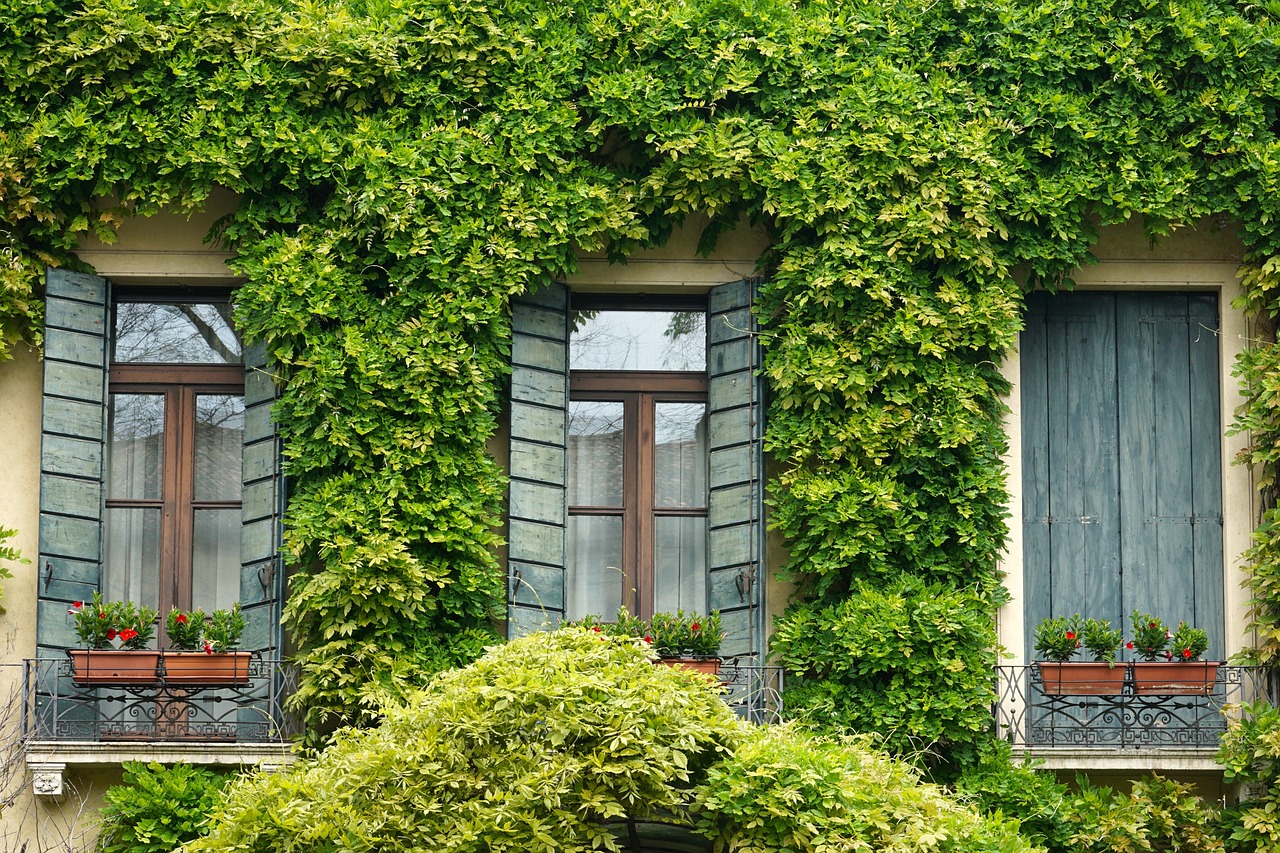
Wired vs. Wireless Systems
When it comes to securing your home, one of the most critical decisions you'll face is whether to opt for a wired or wireless security system. Both options come with their own set of advantages and disadvantages, and understanding these can help you make a more informed choice that suits your needs and lifestyle.
Wired systems are often seen as the traditional choice. They consist of physical cables that connect all components, such as cameras, sensors, and control panels. This setup can provide a more stable and reliable connection, which is essential for those who prioritize consistent performance. However, installation can be quite invasive, requiring drilling and running wires through walls, which could be a hassle for many homeowners.
On the other hand, wireless systems have surged in popularity due to their ease of installation and flexibility. Without the need for extensive wiring, these systems can be set up quickly and often allow for greater customization. You can easily move cameras and sensors around, adapting to your security needs as they change. However, wireless systems can sometimes be susceptible to interference from other devices, and battery life can be a concern for certain components.
To help you weigh your options, here’s a quick comparison in table format:
| Feature | Wired Systems | Wireless Systems |
|---|---|---|
| Installation | Complex and invasive | Simple and quick |
| Reliability | Highly reliable; less interference | Can suffer from interference |
| Cost | Higher initial cost | Lower initial cost |
| Flexibility | Less flexible; requires rewiring for changes | Highly flexible; easy to relocate |
Ultimately, the choice between wired and wireless systems depends on your specific needs. If you’re looking for a more permanent solution and don’t mind the installation process, a wired system may be the way to go. However, if you prefer flexibility and ease of setup, a wireless system might be the better choice. Consider your lifestyle, the layout of your home, and how much you're willing to invest in your security system. After all, ensuring the safety of your family and belongings is what truly matters!
- Are wired security systems more secure than wireless? Wired systems can offer more stability and are less susceptible to hacking, but both systems can be secure if properly installed and maintained.
- Can I upgrade my wired system to wireless later? In many cases, yes! However, it may require additional components or a complete overhaul of your existing setup.
- How long do batteries last in wireless systems? Battery life varies depending on the device and usage, but most can last anywhere from several months to a few years before needing replacement.

Monitoring Options: Professional vs. DIY
When it comes to securing your home, one of the most critical decisions you'll face is whether to opt for professional monitoring or a DIY system. Each option has its unique advantages and drawbacks, and understanding these can help you make the best choice for your specific needs.
Professional monitoring typically involves a service that constantly keeps an eye on your security system. This means that if a sensor is triggered, a trained operator will immediately assess the situation and contact the authorities if necessary. The peace of mind that comes with knowing that someone is always watching over your home is invaluable. However, this service usually comes with a monthly fee, which can add up over time.
On the other hand, a DIY system allows you to take control of your home security without the ongoing costs associated with professional services. With a DIY setup, you can monitor your home through a smartphone app, receive alerts directly, and even set up your own cameras and sensors. This option is often more flexible and customizable, allowing you to tailor your security system to fit your lifestyle. However, it does require a degree of technical know-how and responsibility, as the onus is on you to respond to alerts and manage your system effectively.
To help you weigh your options, here's a quick comparison:
| Feature | Professional Monitoring | DIY Monitoring |
|---|---|---|
| 24/7 Monitoring | Yes | No |
| Response Time | Immediate | Varies |
| Cost | Monthly Fee | One-time Purchase |
| Ease of Use | Simple, requires little setup | Requires tech-savvy |
| Customization | Limited | Highly customizable |
Ultimately, the choice between professional and DIY monitoring depends on your personal preferences, budget, and how much control you want over your home security. If you value convenience and peace of mind, professional monitoring might be the way to go. However, if you enjoy hands-on management and want to save on costs, a DIY system could be the perfect fit. The key is to assess your specific situation and determine what level of security makes you feel the safest in your own home.
- What is the cost difference between professional and DIY monitoring? Professional monitoring usually involves a monthly fee, while DIY systems often require only a one-time purchase.
- Can I switch from DIY to professional monitoring later? Yes, many DIY systems offer the option to add professional monitoring services at any time.
- How do I know which system is better for my home? Consider factors such as your budget, technical skills, and how much control you want over your security measures.
- Are DIY systems as reliable as professional ones? DIY systems can be very reliable, but they require you to be proactive in monitoring and responding to alerts.

Outdoor Security Measures
When it comes to securing your home, the outdoors should never be overlooked. Think of your property as a fortress; the exterior is your first line of defense against potential intruders. By implementing effective outdoor security measures, you not only protect your belongings but also create a safe haven for your family. So, what can you do to enhance your outdoor security? Let's dive into some practical strategies that can make a significant difference.
First and foremost, lighting plays a crucial role in deterring unwanted visitors. Proper outdoor lighting can illuminate dark corners and pathways, making it difficult for intruders to approach unnoticed. Consider installing motion-sensor lights around your yard, especially near entry points such as doors and windows. These lights activate when they detect movement, startling any would-be trespassers and alerting you to their presence. Additionally, ambient lighting along pathways not only enhances aesthetics but also increases visibility, ensuring that you and your guests can navigate safely at night.
Next, let’s talk about landscaping. Believe it or not, the way you design your yard can either invite trouble or deter it. A well-maintained yard with trimmed bushes and clear sightlines can make it harder for intruders to hide. When planning your landscaping, consider the following:
- Keep shrubs and trees trimmed to a height of no more than three feet near windows and doors.
- Plant thorny bushes under windows to create a natural barrier.
- Avoid using tall fences that block visibility; instead, opt for shorter fences that allow you to see your surroundings.
Another effective outdoor security measure is the installation of surveillance cameras. These devices not only act as a deterrent but also provide valuable evidence in case of a break-in. Modern security cameras come equipped with features like night vision, motion detection, and two-way audio, allowing you to monitor your property from anywhere using your smartphone. Position these cameras strategically to cover all entry points, driveways, and blind spots around your home.
Lastly, consider the importance of neighborhood awareness. Building a sense of community can significantly enhance your home’s security. When neighbors look out for each other, it creates a network of vigilance that is hard for intruders to breach. Organizing neighborhood watch programs or simply fostering friendly relationships with your neighbors can lead to a safer environment for everyone. Remember, a united community is a strong community!
In summary, enhancing outdoor security requires a combination of effective lighting, smart landscaping, surveillance technology, and community involvement. By taking these steps, you can create a secure atmosphere that not only protects your home but also gives you peace of mind. Now, let’s address some common questions about outdoor security measures.
Q: How can I improve my outdoor lighting without spending too much?
A: You can start by replacing your existing bulbs with energy-efficient LED lights and adding motion-sensor features to your current outdoor fixtures. This way, you save on energy costs while enhancing security.
Q: Are surveillance cameras worth the investment?
A: Absolutely! Surveillance cameras not only deter crime but also provide you with peace of mind. They can help you monitor your property when you're away and provide crucial evidence in case of an incident.
Q: What should I do if I notice suspicious activity in my neighborhood?
A: It’s important to trust your instincts. If you see something suspicious, report it to local authorities immediately. Additionally, inform your neighbors to keep them alert.

Effective Outdoor Lighting
When it comes to home security, effective outdoor lighting is a game changer. Imagine stepping outside your front door at night, only to be greeted by a well-lit pathway that not only illuminates your way but also discourages any potential intruders lurking in the shadows. Proper lighting can transform dark corners into bright, welcoming spaces, making it harder for unwanted visitors to approach unnoticed. It's not just about aesthetics; it's about creating a safe environment for you and your family.
One of the most effective strategies is to install motion-activated lights. These lights turn on automatically when they detect movement, startling any intruder and alerting you to their presence. You can place these lights near entry points such as doors and garages, ensuring that any movement triggers a bright light, effectively illuminating the area. Not only do they serve a practical purpose, but they also save energy by only operating when needed.
In addition to motion-activated lights, consider using solar-powered lights for pathways and garden areas. These eco-friendly options charge during the day and provide a soft glow at night, enhancing visibility without adding to your electricity bill. Solar lights come in various styles, so you can choose designs that complement your home’s aesthetics while ensuring safety. With a little creativity, you can use these lights to highlight features of your garden or home, making your property look inviting while keeping it secure.
Moreover, it's essential to think about the placement of your outdoor lighting. Here are some tips to maximize its effectiveness:
- Illuminate Entry Points: Ensure that all doors, including garage and side entrances, are well-lit.
- Highlight Pathways: Use lights along walkways to guide visitors safely to your door.
- Focus on Dark Areas: Identify and light up any dark spots in your yard where intruders could hide.
For those looking for a more sophisticated approach, integrating smart lighting systems into your home can be a significant advantage. These systems allow you to control your outdoor lights from your smartphone, giving you the ability to turn lights on or off remotely. You can even set schedules to make it appear as if someone is home, which is a fantastic deterrent against burglary. Imagine being on vacation and having the ability to turn your lights on and off, making it look like your home is occupied.
In summary, effective outdoor lighting is not just about keeping your property beautiful; it's about ensuring safety and security. By utilizing motion-activated lights, solar-powered options, and smart technology, you can create a well-lit environment that deters intruders and provides peace of mind for you and your family. So, why wait? Start brightening up your home today and take the first step towards a more secure living space!
1. How can outdoor lighting deter intruders?
Outdoor lighting illuminates potential hiding spots for intruders, making it difficult for them to approach unnoticed. Brightly lit areas also signal to potential burglars that the property is occupied and monitored.
2. What types of outdoor lights are best for security?
Motion-activated lights, solar-powered lights, and smart lighting systems are all excellent choices for enhancing security. Each type serves a unique purpose and can be strategically placed to maximize safety.
3. Are solar lights effective for security?
Yes, solar lights can be effective for security, especially when placed along pathways and near entry points. They provide a consistent light source without the need for electrical wiring, making them both practical and eco-friendly.
4. Can I control outdoor lights remotely?
Yes! Smart lighting systems allow you to control your outdoor lights via a smartphone app, enabling you to turn them on or off from anywhere, which is great for simulating occupancy when you're away.
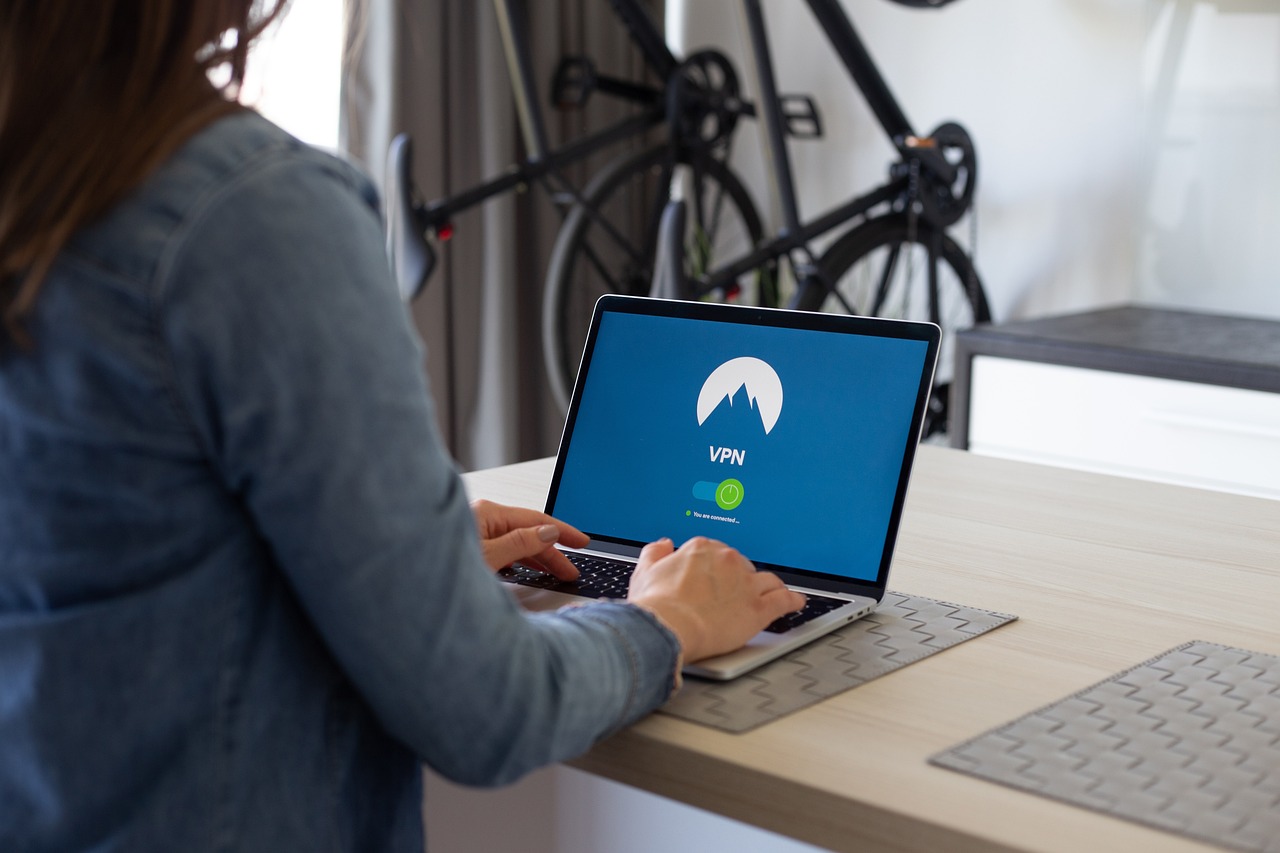
Landscaping for Security
When it comes to home security, landscaping is often an overlooked yet critical element. A well-planned yard can not only enhance the aesthetic appeal of your home but also serve as a formidable barrier against potential intruders. Think of your yard as the first line of defense; it’s the welcome mat for your home’s security. By strategically designing your landscaping, you can minimize hiding spots and improve visibility, making it harder for unwanted guests to approach unnoticed.
One of the key aspects of landscaping for security is the choice of plants. Opt for thorny bushes or dense shrubs near windows and entry points. These natural barriers can act as an effective deterrent, making it uncomfortable for anyone attempting to trespass. For instance, planting barberry or roses can create a prickly obstacle that discourages intruders from getting too close. Additionally, consider using low-growing plants in areas where visibility is essential. This way, you can maintain a clear line of sight from your windows and doors, allowing you to spot any suspicious activity early.
Moreover, the layout of your garden can significantly impact your home's security. Avoid tall trees or large decorative features that can create hiding spots. Instead, keep your landscaping open and well-lit. Consider using motion-sensor lights to illuminate dark corners of your yard. Not only do these lights enhance safety, but they also create an environment where intruders are less likely to approach. If you’re unsure about the best lighting options, here’s a quick comparison:
| Lighting Type | Advantages | Disadvantages |
|---|---|---|
| Motion-Sensor Lights | Activates when movement is detected, saving energy. | May be triggered by pets or wildlife. |
| Solar Lights | Eco-friendly and easy to install. | May not provide enough brightness for security. |
| Flood Lights | Provides bright illumination across a wide area. | Higher energy consumption. |
Another crucial factor is the maintenance of your landscaping. Overgrown bushes and unkempt lawns can signal neglect, which may attract intruders. Regularly trimming your plants and keeping your yard tidy not only enhances the overall appearance but also sends a message that your home is well cared for and monitored. Additionally, consider installing fences or gates to establish clear boundaries around your property. Fences can act as a physical barrier while also providing an additional layer of privacy.
In summary, landscaping for security is about more than just aesthetics; it’s about creating a safe environment for you and your family. By incorporating thorny plants, maintaining visibility, utilizing effective lighting, and keeping your yard well-maintained, you can significantly enhance your home’s security. Remember, a little thoughtfulness in your landscaping can go a long way in deterring those who might wish to do you harm.
- How can I improve my home's security with landscaping?
Focus on using thorny plants, maintaining visibility, and incorporating effective lighting. - What types of plants are best for security?
Consider using barberry, holly, or rose bushes, as they can deter intruders with their thorns. - Is it important to keep my yard maintained for security?
Yes, a well-maintained yard signals that the property is cared for and monitored, which can deter potential intruders.

Creating a Neighborhood Watch
Establishing a Neighborhood Watch is more than just a community initiative; it’s a powerful way to enhance the safety and security of your neighborhood. Imagine a network of vigilant neighbors, each looking out for one another, creating a protective blanket over your homes. It’s like having a safety net woven from trust and cooperation, where everyone plays a part in keeping the community secure. But how do you go about forming such a group? Let’s delve into the steps that can help you create an effective Neighborhood Watch.
First and foremost, it’s essential to gather interested neighbors. This can be done by simply knocking on doors or sending out flyers. A casual meet-up at a local park or someone’s backyard can set the stage for discussing the idea. During this initial meeting, you can share your vision of a safer neighborhood and gauge interest. Remember, the more diverse the group, the broader the perspective on safety concerns.
Once you have a group of interested individuals, it’s time to discuss the structure of your Neighborhood Watch. Consider appointing a coordinator who will take charge of organizing meetings, distributing information, and serving as the main point of contact. This person can also liaise with local law enforcement, which is crucial for ensuring your watch is effective and recognized by the authorities.
Regular meetings are vital for maintaining momentum and keeping everyone engaged. These gatherings can be used to discuss recent incidents in the area, share safety tips, and plan community events. To make these meetings productive, you might want to establish a set agenda that includes:
- Updates from law enforcement
- Discussion of local crime trends
- Planning upcoming events or initiatives
Utilizing technology can significantly enhance your Neighborhood Watch efforts. Consider creating a group chat or using social media platforms to share information quickly and efficiently. Apps designed for community safety can also facilitate communication among residents, allowing for real-time updates on suspicious activities. This digital approach ensures that everyone stays informed and can react promptly to any potential threats.
It's also essential to foster a sense of community. Organizing social events, such as block parties or potlucks, can help strengthen relationships among neighbors. When people know each other, they are more likely to look out for one another. Plus, it makes for a friendlier neighborhood where everyone feels connected.
Lastly, consider developing a set of guidelines for the Neighborhood Watch. This could include protocols for reporting suspicious behavior, the importance of not confronting potential criminals, and how to maintain the privacy and safety of all members. Clear guidelines help ensure that everyone is on the same page and understands their roles within the group.
In conclusion, creating a Neighborhood Watch is a proactive step towards enhancing your community's safety. It requires effort and commitment, but the rewards—a secure environment and stronger community bonds—are well worth it. So, gather your neighbors, share your vision, and start building a safer place for everyone!

Organizing Neighborhood Meetings
Organizing neighborhood meetings is a fantastic way to build a sense of community and strengthen the bonds among residents. When you gather your neighbors, it creates a supportive environment where everyone can share their concerns and ideas about improving safety in the area. But how do you go about organizing these meetings effectively? First, consider the purpose of your meeting. Are you focusing on crime prevention, discussing community events, or perhaps sharing tips on home security? Defining a clear objective will help guide the conversation and keep everyone engaged.
Next, think about the logistics. Choose a convenient location that is easily accessible to all attendees. This could be a local community center, a park, or even someone's backyard. Make sure to set a date and time that works for most people. You might even want to consider a poll to find the best time for everyone. Once you have the details sorted out, spread the word! Utilize social media, community boards, and good old-fashioned flyers to invite your neighbors. The more, the merrier!
During the meeting, create an open atmosphere where everyone feels comfortable to speak. Start with introductions, allowing each person to share a little about themselves. This can foster a sense of belonging and encourage participation. You might also want to have a discussion agenda to keep the meeting on track. Consider including topics like:
- Local crime trends and safety tips
- Plans for community events
- Ideas for enhancing neighborhood security
Encourage everyone to contribute their thoughts and experiences. This not only enriches the discussion but also helps neighbors feel valued and heard. After all, the goal is to create a collaborative effort in enhancing neighborhood safety.
Finally, don’t forget to follow up after the meeting! Summarize the key points and action items discussed, and share them with attendees. This keeps everyone informed and motivated to implement the ideas generated during the meeting. You could even schedule regular follow-up meetings to maintain momentum and continue addressing community concerns. By actively engaging with your neighbors, you’re not just enhancing security; you’re building a stronger, more connected community.
Q: How often should we hold neighborhood meetings?
A: It's beneficial to hold neighborhood meetings at least once every few months. However, if there are pressing issues, feel free to schedule them more frequently.
Q: What if some neighbors are hesitant to join the meetings?
A: Encourage participation by emphasizing the benefits of community involvement. You can also offer to share meeting notes with those who cannot attend.
Q: How can we keep the meetings productive?
A: Establish a clear agenda, set time limits for discussions, and designate a facilitator to keep the conversation flowing smoothly.

Utilizing Technology in Neighborhood Watch
In today's digital age, leveraging technology has become a game-changer for neighborhood watch programs. Imagine being able to keep an eye on your community from the comfort of your couch or while on vacation. With the right tools, this is not only possible but also incredibly effective. Neighborhood watch groups can now harness the power of various technological advancements to enhance their surveillance and communication efforts, ensuring that everyone in the community is kept informed and safe.
One of the most impactful technologies for neighborhood watch is the use of mobile apps designed for community safety. These apps allow residents to report suspicious activities, share alerts, and communicate in real-time. For instance, apps like Nextdoor and Citizen provide platforms where neighbors can post updates, share concerns, and even coordinate meetings. This instant communication fosters a sense of community and encourages residents to look out for one another.
Additionally, social media platforms have become invaluable tools for neighborhood watch groups. By creating dedicated pages or groups on platforms such as Facebook, communities can easily disseminate information about local crime trends, safety tips, and upcoming events. This not only keeps everyone informed but also strengthens community bonds. Imagine a post alerting your neighbors about a recent break-in, prompting them to be more vigilant—this is the kind of proactive approach that technology enables.
Moreover, the integration of surveillance cameras has revolutionized the way neighborhoods monitor their surroundings. Many homeowners are now installing smart cameras that can be accessed remotely via smartphones. These cameras can provide live feeds and send alerts when motion is detected, allowing residents to keep an eye on their properties and report any suspicious activities to law enforcement immediately. For example, a simple setup of a few strategically placed cameras can cover most vulnerable areas of a neighborhood, acting as a powerful deterrent against potential intruders.
Furthermore, neighborhoods can benefit from neighborhood watch websites that serve as central hubs for information sharing. These websites can feature crime maps, safety resources, and event calendars. Such platforms not only keep residents informed but also encourage participation in community safety initiatives. By fostering a collaborative environment, technology can help create a proactive culture around neighborhood safety.
In conclusion, the integration of technology into neighborhood watch programs not only enhances communication and surveillance but also empowers communities to take control of their safety. By utilizing mobile apps, social media, surveillance cameras, and dedicated websites, residents can work together more effectively to create a secure living environment. The future of neighborhood watch is bright, and with technology on our side, it’s easier than ever to keep our communities safe.
- What is a neighborhood watch? A neighborhood watch is a community-based program where residents work together to monitor and report suspicious activities in their area.
- How can technology enhance a neighborhood watch program? Technology can improve communication, provide real-time alerts, and facilitate the sharing of information through apps and social media.
- Are surveillance cameras effective for neighborhood safety? Yes, surveillance cameras can deter crime and provide valuable evidence in case of incidents, making them a worthwhile investment for homeowners.
- What role do social media play in neighborhood watch? Social media allows for quick information sharing and fosters community engagement, making it easier for residents to stay informed about local safety issues.
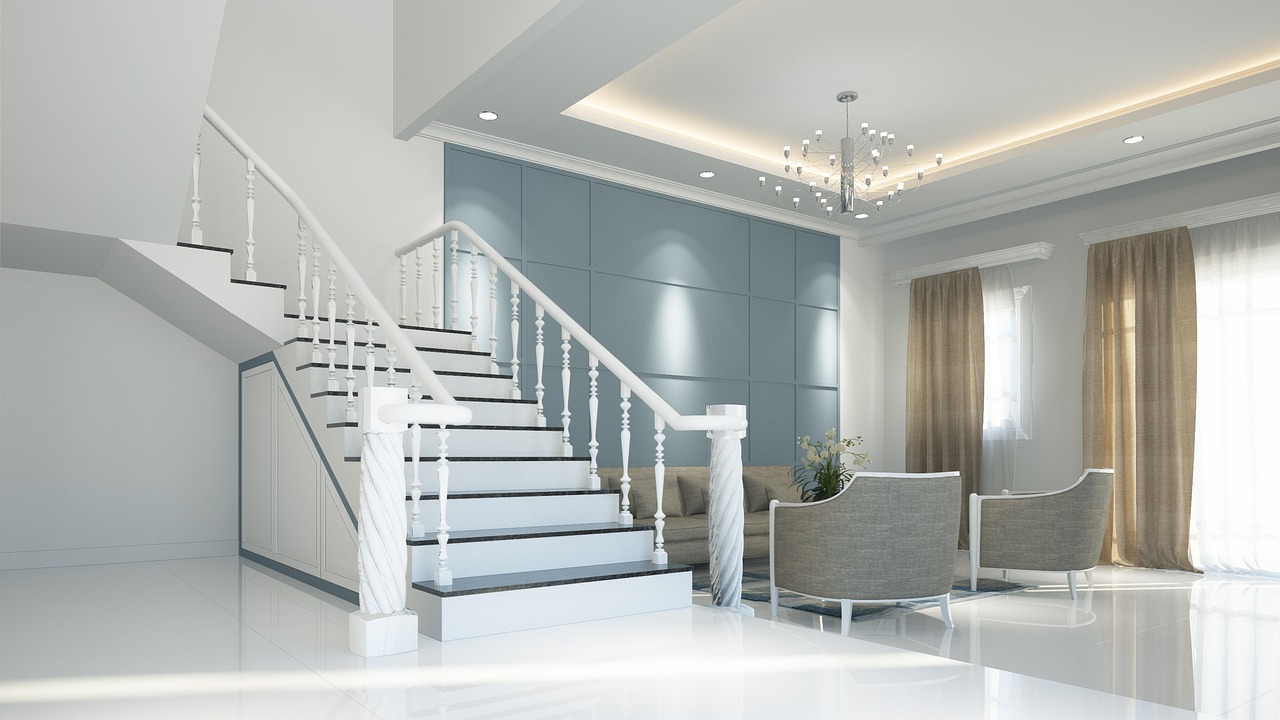
Emergency Preparedness
Being prepared for emergencies is not just a good idea; it's a necessity that can make a significant difference in the safety and security of your family. Emergencies can strike at any time, whether it’s a security breach, a natural disaster, or any other unexpected event. The key to effective emergency preparedness lies in having a well-thought-out plan and ensuring that all family members are familiar with it. Think of it as creating a safety net; it’s not about expecting the worst, but rather being ready should the unexpected happen.
To start, you should create a comprehensive emergency plan that outlines what each family member should do in various situations. This plan should be clear, concise, and accessible to everyone in the household. Consider including the following elements:
- Contact Information: List emergency contacts, including local authorities, family members, and friends.
- Meeting Points: Designate safe meeting locations in case family members are separated.
- Evacuation Routes: Identify and practice routes to exit your home and neighborhood.
Once the plan is in place, it’s essential to conduct regular safety drills. These drills serve as practice sessions, allowing family members to react calmly and effectively during an actual emergency. Just like fire drills in school, these practices can help instill a sense of confidence and preparedness. You might want to practice scenarios such as:
- What to do in case of a break-in.
- How to respond to a fire alarm.
- Steps to take during severe weather warnings.
Moreover, having an emergency kit readily available is crucial. This kit should contain essential supplies to sustain your family for at least 72 hours. Consider including items such as:
| Item | Purpose |
|---|---|
| Water | At least one gallon per person per day |
| Non-perishable food | Energy-rich foods like granola bars, canned goods, etc. |
| Flashlight | To illuminate dark areas during power outages |
| First aid kit | For treating minor injuries |
| Whistle | To signal for help if needed |
Finally, it’s vital to stay informed. Monitor local news and weather reports to be aware of any potential threats. Many communities also have alert systems that send notifications about emergencies. By staying informed, you can react swiftly and effectively to any situation that arises.
In conclusion, emergency preparedness is about creating a culture of safety within your home. By developing a solid plan, conducting drills, maintaining an emergency kit, and staying informed, you can significantly enhance your family's safety and peace of mind. Remember, the goal is not just to react to emergencies, but to minimize their impact through proactive planning and preparation.
Q: What should I include in my emergency kit?
A: Your emergency kit should include water, non-perishable food, a flashlight, a first aid kit, and a whistle, among other essential items.
Q: How often should I conduct emergency drills?
A: It's recommended to conduct emergency drills at least twice a year to keep everyone familiar with the plan.
Q: What are the best ways to stay informed about emergencies?
A: Monitor local news, weather reports, and consider signing up for community alert systems that provide notifications about emergencies.

Creating an Emergency Plan
When it comes to home security, having an emergency plan is like having a safety net. You never know when a crisis might strike, whether it’s a break-in, a natural disaster, or any other unexpected event. So, how do you prepare your family to respond effectively when the unexpected happens? The first step is to sit down together and discuss potential emergencies. This isn't just about talking; it's about **creating a roadmap** that everyone understands. Think of it as a family adventure where everyone knows their role and what to do if things go sideways.
Start by identifying the different types of emergencies that could occur in your area. For instance, if you live in a region prone to hurricanes, your plan will look different than if you’re in an area susceptible to wildfires or earthquakes. Once you have a list of potential emergencies, you can tailor your plan accordingly. It’s essential to include procedures for each scenario, such as evacuation routes, meeting points, and communication methods.
Next, create a **communication plan**. In the chaos of an emergency, it’s easy to lose track of each other. Establish a central point of contact outside your home—perhaps a relative or friend—where family members can check in. This ensures that even if you’re separated, you can still reconnect. Make sure everyone knows how to reach this person, whether through phone calls or messaging apps. You might even consider creating a simple contact card with important numbers that everyone can carry.
It’s also vital to **practice your emergency plan**. Just like you wouldn’t jump into a new sport without some practice, you shouldn’t expect your family to execute an emergency plan flawlessly on the first try. Schedule regular drills to ensure that everyone knows what to do and where to go. These drills can be as simple as a fire drill, where you practice getting out of the house quickly, or a more complex scenario involving a natural disaster. The more familiar everyone is with the plan, the more confident they will feel in a real emergency.
Additionally, consider assembling an **emergency kit** that includes essential supplies. This kit should be easily accessible and contain items such as water, non-perishable food, a flashlight, batteries, a first-aid kit, and any necessary medications. You can even create a checklist to ensure that you have everything you need. Here’s a simple example of what to include in your kit:
| Item | Quantity |
|---|---|
| Water (1 gallon per person per day) | 3-day supply |
| Non-perishable food | 3-day supply |
| Flashlight | 1 |
| Batteries | Assorted |
| First-aid kit | 1 |
| Medications | As needed |
Lastly, remember that an emergency plan is not a one-time task; it requires **regular updates**. Life changes, and so do the needs of your family. Make it a habit to review and revise your plan at least once a year or whenever there are significant changes, such as a new family member or a change in your living situation. Keeping your plan current ensures that everyone remains prepared and confident in their roles.
In conclusion, creating an emergency plan is about more than just preparing for the worst; it’s about fostering a sense of security and togetherness within your family. By being proactive and establishing clear protocols, you can turn what could be a panic-filled situation into a well-coordinated response. So, gather your family, start the conversation, and take those first steps towards a safer home.
- What should be included in an emergency plan? An emergency plan should include contact information, evacuation routes, meeting points, and procedures for different types of emergencies.
- How often should we practice our emergency plan? It’s recommended to practice your emergency plan at least twice a year, but more frequent drills can help keep everyone prepared.
- What items should be in an emergency kit? Essential items include water, non-perishable food, a flashlight, batteries, a first-aid kit, and any necessary medications.
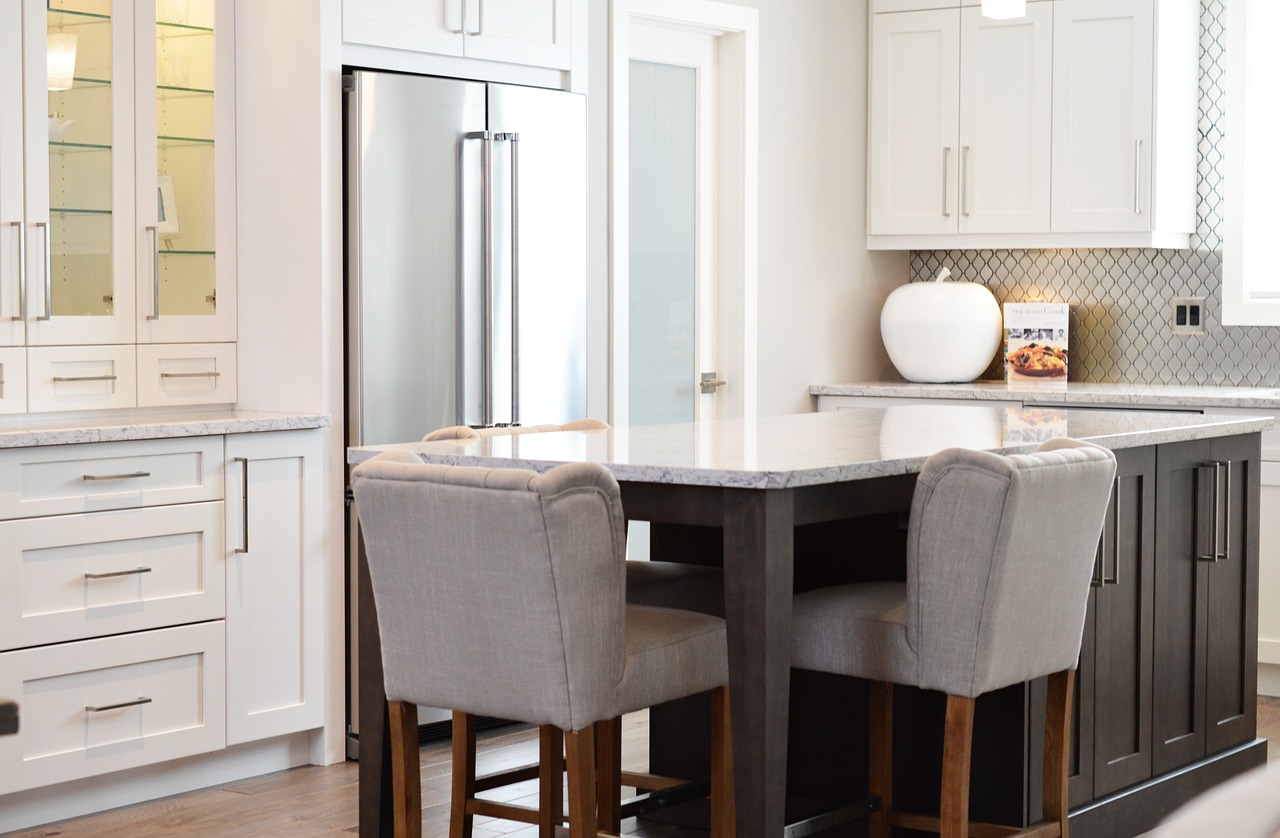
Safety Drills for the Family
When it comes to home security, preparation is key. One of the most effective ways to ensure your family knows how to react in case of an emergency is through regular safety drills. Think of these drills as a rehearsal for the unexpected; just like actors prepare for a play, your family should be ready for any potential security threats. By practicing various scenarios, you can help everyone feel more confident and less anxious when faced with a real-life situation.
Start by identifying the types of emergencies that could occur in your home. These might include break-ins, natural disasters, or fires. Once you have a list, you can tailor your drills to cover these scenarios. For example, if you’re focusing on a break-in, you might simulate what to do if someone knocks on the door late at night or how to escape through a window if necessary.
During these drills, it's important to assign roles to each family member. This can help everyone understand their responsibilities and reduce confusion during a real emergency. For instance, you might designate one person to call 911, another to gather everyone in a safe room, and someone else to check on pets. By clearly defining roles, you create a sense of teamwork and ensure that everyone knows what to do.
Additionally, consider incorporating a communication plan into your drills. Discuss how family members can contact each other if separated during an emergency. This could involve using a specific meeting point outside the home or having a designated family member to reach out to if anyone is away. Having a plan in place ensures that everyone knows where to go and what to do, minimizing panic and confusion.
After each drill, take a moment to reflect on what went well and what could be improved. Encourage open communication, allowing everyone to share their thoughts and feelings about the exercise. This feedback loop not only helps improve future drills but also reinforces the importance of safety as a family unit.
In summary, regular safety drills are an essential part of home security. They prepare your family for emergencies, promote teamwork, and help everyone feel more secure in their home. Remember, the goal is to turn fear into confidence, so make these drills a fun and engaging experience. You might even consider rewarding your family with a treat after completing a drill to reinforce positive associations with safety preparedness!
- How often should we conduct safety drills? It's recommended to hold safety drills at least twice a year to keep everyone familiar with the procedures.
- What types of emergencies should we practice? Focus on various scenarios such as break-ins, fires, and natural disasters to cover a broad range of potential threats.
- How can I make safety drills more engaging for my family? Consider turning drills into a game or challenge, rewarding participation with small prizes or treats.
- Should we involve our neighbors in safety drills? Yes! Engaging with neighbors can create a stronger community and enhance overall safety.
Frequently Asked Questions
- What are the basic principles of home security?
Understanding home security begins with a few key principles: ensuring all entry points are secure, using quality locks, and being aware of your surroundings. Simple actions like locking doors and windows can significantly reduce the risk of break-ins.
- How do I choose the right locks for my home?
Selecting the right locks involves considering the type of doors and windows you have. Deadbolts are generally more secure than standard locks, and you should also assess whether single or double cylinder deadbolts suit your needs based on accessibility and security.
- Are smart locks worth the investment?
Smart locks offer convenience and remote access, but they can come with vulnerabilities. Weighing the pros and cons is crucial; consider how often you would use the smart features versus the potential risks involved.
- What types of security systems are available?
There are numerous security systems to choose from, including wired and wireless options. Each has its own benefits—wired systems are often more reliable, while wireless systems offer flexibility and easier installation.
- What should I consider when installing outdoor security measures?
When enhancing outdoor security, think about effective lighting, strategic landscaping, and surveillance cameras. Well-lit areas deter intruders, while clear sightlines from your home can help spot suspicious activity.
- How can I get my neighborhood involved in security efforts?
Creating a neighborhood watch is a great way to enhance community safety. Organizing regular meetings to discuss security concerns and sharing information through apps or social media can foster a sense of collective vigilance.
- What steps should I take for emergency preparedness?
Emergency preparedness involves creating a clear plan for your family, which includes escape routes and communication strategies. Regular safety drills can help everyone react calmly and effectively in case of an emergency.



















